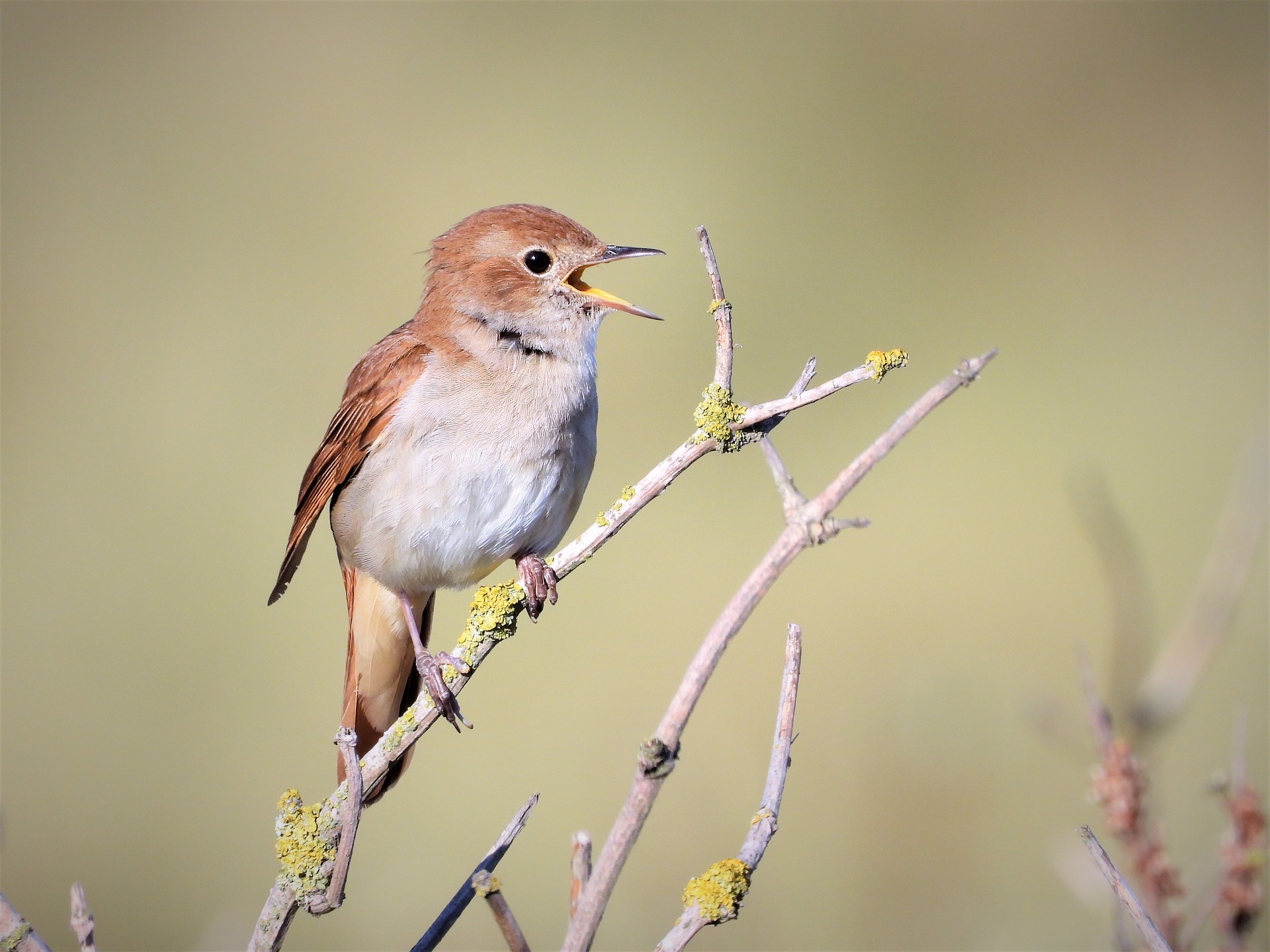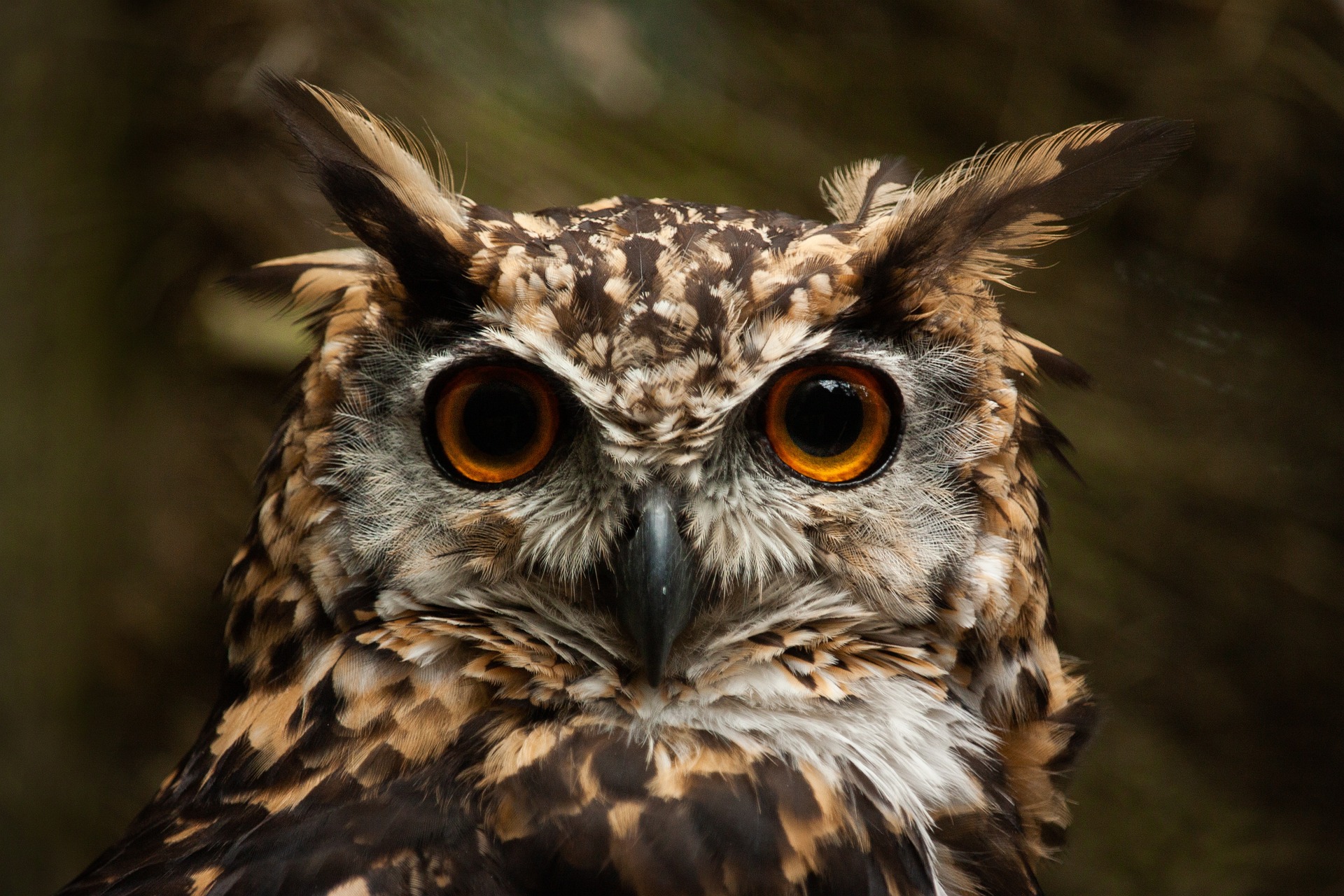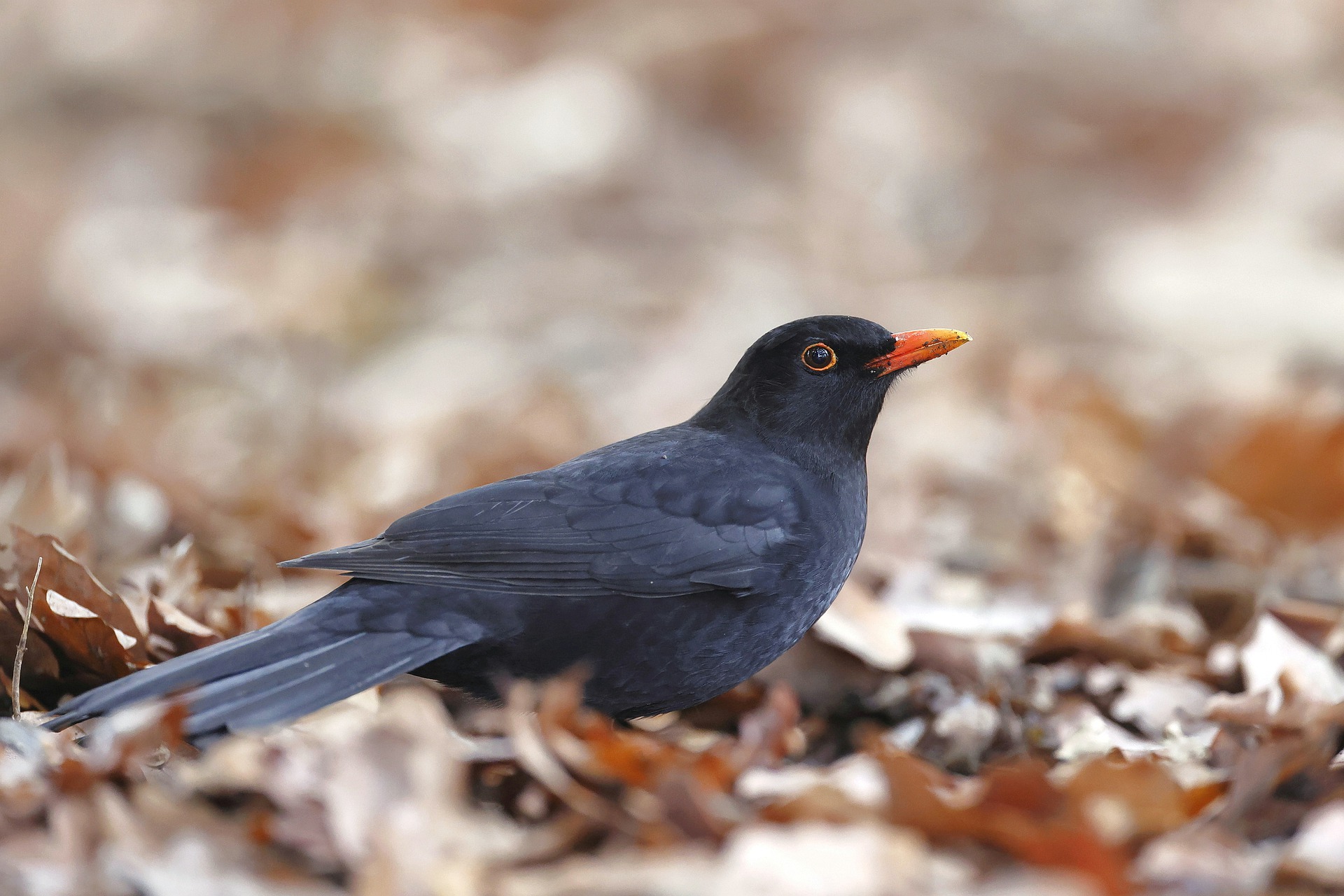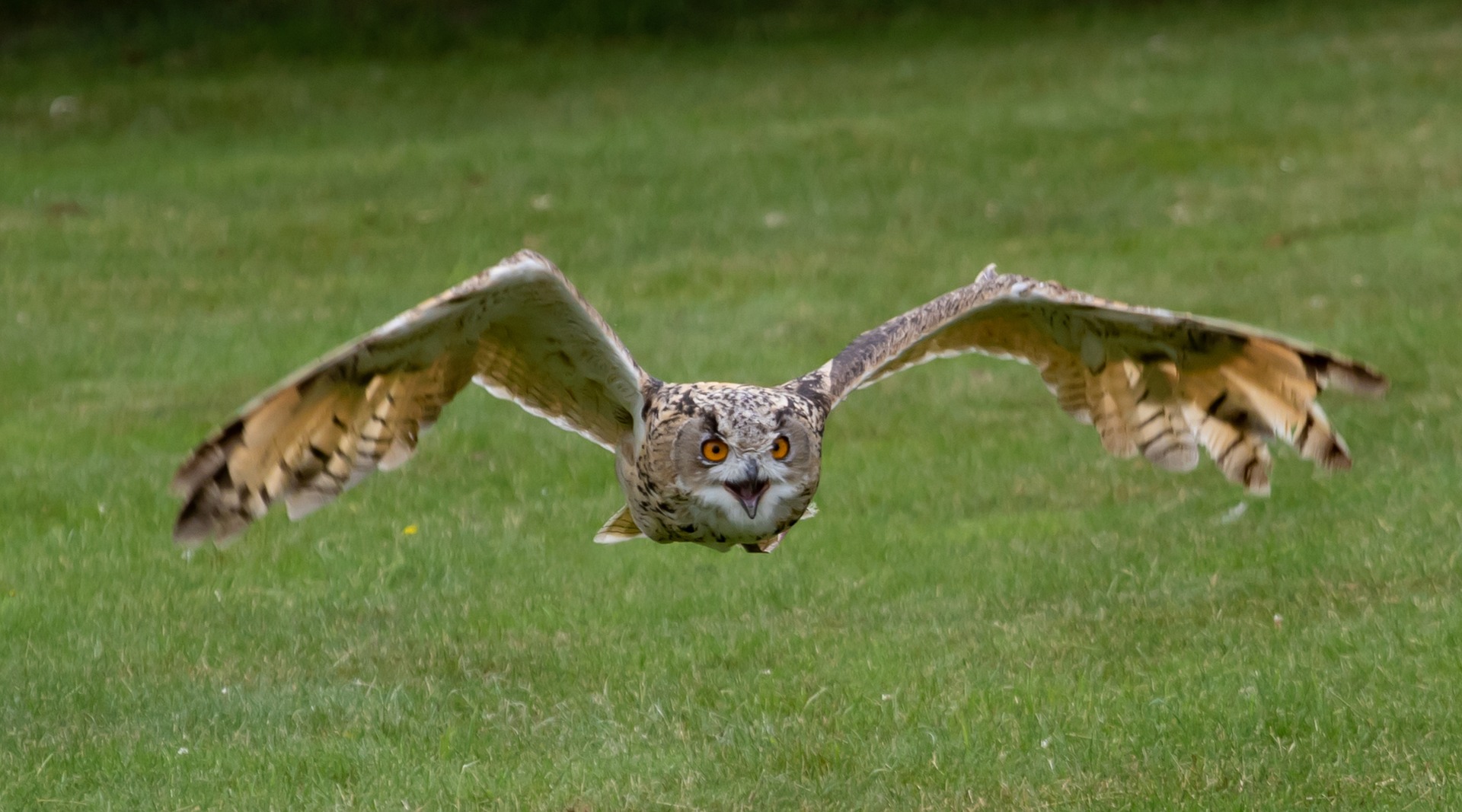Bright Side of the Night – 2.2.2
Birds
Winged Friends
Many birds tend to be diurnal. While they have to turn their heads to locate sound, they see extremely well, picking up signals in the ultraviolet (UV), mid-spectral, and long-wave ranges. Color perception depends on the species and is important for communication and social interaction. Some species, especially migratory birds, even sense the earth’s magnetic field.
Nightingale
According to its name, the nightingale is a “night singer”. The song is particularly cherished by humans. Nightingale’s extensive repertoire of melodic patterns is almost unique among European songbirds. In many folk traditions, the bird is a symbol of love, and its song is considered to alleviate pain and to help the sick to recover. Only males sing, starting at around 23.00 hours in the evening and singing through the night. Once a mating partner has been found, the singing stops. The nightingale (Luscinia megarhynchos) is a migratory bird, native to Europe, Asia and Africa and inhabiting dense scrub, often at the edge of forests and in damp terrain. This bird feeds on insects and their larvae, worms or caterpillars, sometimes also on spiders or other invertebrates. In summer and autumn, berries ae their main food.
Blackbird
The blackbird is a widespread breeding bird across Europe, and is easy to identify thanks to the male’s yellow bill and black colour. The female is mostly dark brown. The melodious and loud territorial song of the male can be heard between March and July. It starts singing well before dawn, and then again intensely in the evening. In urban dwellings, blackbirds (Turdus merula) are also reported to sing at night, even in winter. Blackbirds in Central Europe leave the breeding area in winter and migrate South, travelling mainly at night or at dawn. Blackbirds forage mainly on the ground, feeding on earthworms or beetles, but also berries and fruit. Individuals can reach an age of more than ten years.
Owls
Owls are the birds of the night, known for their large light-sensitive eyes, while their most important sensory organ are their ears. These are asymmetrically arranged and can locate sounds from a distance of 60 meters even in total darkness, because sound waves are focused by the face veil, and directed to the ear opening. Thanks to their large wing surface, owls can fly silently. Fur-like feathers on the surface and the finely sawn leading edges of the outermost wing feathers support silent flight. The eagle owl (Bubo bubo)—native to Europe, Asia, and Africa, —is the largest owl in the world, boasting a wingspan of up to 170 centimeters. It has been observed covering particularly long distances and flying faster at full moon, probably because prey is hiding from the moonlight.


Further Resources
Links below will redirect you to external websites. In accordance with the European data protection declarations, we would like to point out that by clicking on these links you may send data to external providers. We cannot prevent that.
Videos
![]() The effects of light pollution on migrating birds
The effects of light pollution on migrating birds
![]() Short Film: Light pollution and migratory birds
Short Film: Light pollution and migratory birds
![]() Animated Short Film: World Migratory Bird Day 2022
Animated Short Film: World Migratory Bird Day 2022
 Inquinamento luminoso: l’impatto dannoso sulle specie – Nationa Geographic Italia
Inquinamento luminoso: l’impatto dannoso sulle specie – Nationa Geographic Italia
Online Resources
![]()
 Website of Helle Not on “Animals, Plants and Ecosystems in the night” (Helle Not)
Website of Helle Not on “Animals, Plants and Ecosystems in the night” (Helle Not)
![]()
 What happens at night just beyond our doorstep? Bothersome-Brightness-Cartoons (Helle Not)
What happens at night just beyond our doorstep? Bothersome-Brightness-Cartoons (Helle Not)
![]()
 Verlust der Nacht / Loss of the Night: Interdisciplinary Research network
Verlust der Nacht / Loss of the Night: Interdisciplinary Research network
![]() Online-Publication “Into the Night in the Kaunertal Valley”
Online-Publication “Into the Night in the Kaunertal Valley”
 Online-Publikation “Unterwegs in die Nacht im Kaunertal”
Online-Publikation “Unterwegs in die Nacht im Kaunertal”
 Online-Publikation “Konzept zur nachtbezogenen Naturpädagogik“
Online-Publikation “Konzept zur nachtbezogenen Naturpädagogik“
 Giornata Mondiale degli Uccelli Migratori 2022, abbassare le luci per la sopravvivenza di queste specie – e HABITAT
Giornata Mondiale degli Uccelli Migratori 2022, abbassare le luci per la sopravvivenza di queste specie – e HABITAT
 Inquinamento luminoso: che rischi si corrono – Scienza Verde
Inquinamento luminoso: che rischi si corrono – Scienza Verde
 Le luci artificiali ci stanno “rubando la notte”. Con quali conseguenze? – Focus
Le luci artificiali ci stanno “rubando la notte”. Con quali conseguenze? – Focus
 Inquinamento luminoso e sue conseguenze per la fauna selvatica – Esdem Garden
Inquinamento luminoso e sue conseguenze per la fauna selvatica – Esdem Garden
Further Readings
![]()
 Regularly updated Literature and links with regards to light pollution and dark skies (Helle Not)
Regularly updated Literature and links with regards to light pollution and dark skies (Helle Not)
![]()
 Literature & Links on the website “Verlust der Nacht/Loss of the Night”
Literature & Links on the website “Verlust der Nacht/Loss of the Night”
![]() Scientific paper on „The ultraviolet vision in birds“
Scientific paper on „The ultraviolet vision in birds“
Teaching Material
![]() The Barn Owl Trust: Science educational ressources
The Barn Owl Trust: Science educational ressources
For Kids
![]()
 Materials for young scientists: Quiz, Arts and craft corner, App and Exhibition for schools. (Loss of the Night network)
Materials for young scientists: Quiz, Arts and craft corner, App and Exhibition for schools. (Loss of the Night network)
 Unterrichtsmaterialien für Schulen – “Tierprofi Wildtiere” (Die Umweltberatung)
Unterrichtsmaterialien für Schulen – “Tierprofi Wildtiere” (Die Umweltberatung)
 Unterrichtsmaterialien für Schulen – “Lichtverschmutzung” (Die Umweltberatung)
Unterrichtsmaterialien für Schulen – “Lichtverschmutzung” (Die Umweltberatung)
 Wissens- und Methodenbox „Kunstlicht, Nacht und Sternenhimmel“ (Naturfreunde)
Wissens- und Methodenbox „Kunstlicht, Nacht und Sternenhimmel“ (Naturfreunde)


